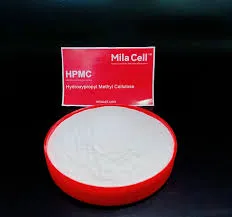
जन . 01, 2025 12:14 Back to list
HPMC Applications in Mortar Formulations and Their Performance Benefits
HPMC for Mortar Enhancing Performance and Workability
Hydroxypropyl Methylcellulose (HPMC) is a popular cellulose derivative widely used in the construction industry, particularly in the formulation of mortars. As a non-ionic, water-soluble polymer, HPMC serves multiple purposes that significantly enhance the properties of cement-based materials, making it an essential additive in modern construction practices.
One of the primary benefits of incorporating HPMC into mortar is its ability to improve workability. Mortar, which is primarily a mixture of water, sand, and cement, can often suffer from issues like poor adhesion and uneven texture. By adding HPMC, the viscosity of the mixture is increased, providing a smoother, more homogenous consistency that is easier to apply. This characteristic is especially advantageous in demanding applications, such as tile adhesives and repair mortars, where ease of handling is crucial for achieving a high-quality finish.
Moreover, HPMC contributes to the water retention capacity of mortar. This property is particularly important in environments with low humidity or when working under direct sunlight, where rapid evaporation of water can adversely affect the curing process of cement. The water-retention capability of HPMC helps to keep the mortar workable for an extended period, allowing for more time to finish the work without compromising the performance of the material. Enhanced water retention also ensures that the cement has adequate moisture during hydration, which is critical for achieving optimal strength and durability.
Another significant advantage of using HPMC in mortar formulations is its influence on adhesion. Enhanced adhesive properties are essential when mortars are applied to various substrates, such as concrete, masonry, or drywall. HPMC improves the bonding strength between the mortar and these surfaces, reducing the likelihood of delamination or failure over time. This is particularly beneficial for tile installations, where strong adhesion is necessary to prevent lifting or cracking.
hpmc for mortar

Additionally, HPMC provides excellent thixotropic properties which means that the mortar can maintain its form and resist slumping over time while allowing for easy application. This feature is particularly useful when working on vertical surfaces, as it prevents the mortar from sliding off and ensures a uniform application, which can lead to improved aesthetics and functionality of the finished product.
Another aspect worth noting is that HPMC is available in various grades, which allows formulators to tailor the performance of the mortar to specific project requirements. Different viscosity levels and degrees of substitution can be selected to meet various criteria, whether that be enhanced fluidity, specific open time, or adjusted setting times. This versatility means that HPMC can be used effectively in a wide range of applications, from low-cost residential construction to high-end architectural projects.
Environmentally, HPMC is considered a green additive, contributing to sustainable building practices. Its use can reduce the need for more hazardous chemical admixtures, thereby promoting a safer working environment and contributing to overall sustainability in construction.
In conclusion, Hydroxypropyl Methylcellulose (HPMC) is a vital component in modern mortar formulations, enhancing workability, water retention, adhesion, and overall performance. Its versatility and effectiveness make it an indispensable additive, driving improvements in construction quality and efficiency. As the construction industry continues to evolve, the role of HPMC in mortar production will undoubtedly play a significant part in the development of better building materials that meet the demands of both contractors and consumers alike.
-
The Widespread Application of Redispersible Powder in Construction and Building Materials
NewsMay.16,2025
-
The Widespread Application of Hpmc in the Detergent Industry
NewsMay.16,2025
-
The Main Applications of Hydroxyethyl Cellulose in Paints and Coatings
NewsMay.16,2025
-
Mortar Bonding Agent: the Key to Enhancing the Adhesion Between New and Old Mortar Layers and Between Mortar and Different Substrates
NewsMay.16,2025
-
HPMC: Application as a thickener and excipient
NewsMay.16,2025
-
Hec Cellulose Cellulose: Multi functional dispersants and high-efficiency thickeners
NewsMay.16,2025







